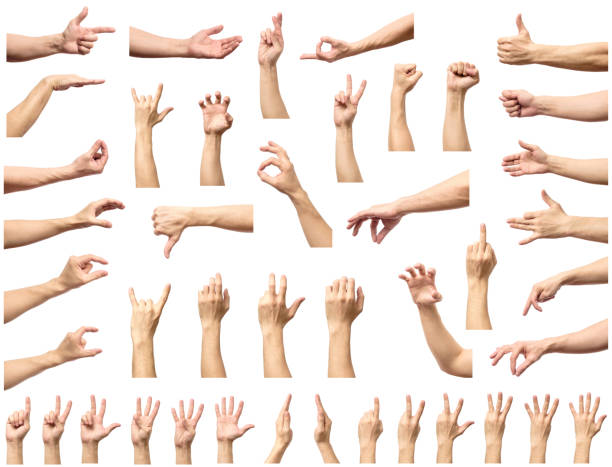
Decode the Unspoken: Master the Art of Body Language Today!
Have you ever found yourself wondering what someone really means, even though their words say one thing? Mastering the art of body language can transform the way you communicate and understand others. In this comprehensive guide on How to Learn Body Language, we’ll explore the subtle gestures, movements, and expressions that reveal what people are truly thinking and feeling. Whether in personal relationships, professional settings, or social interactions, learning body language is a game-changer.
Let’s dive into How to Learn Body Language and unlock the secrets of non-verbal communication!
Why Learn Body Language?
Understanding how to learn body language isn’t just about catching someone in a lie or interpreting a smirk; it’s about enhancing your ability to connect with others. Here’s why learning body language is so important:
- Improve communication: Non-verbal cues often speak louder than words.
- Build stronger relationships: Understanding unspoken emotions can deepen connections.
- Boost professional success: Body language can make or break impressions in job interviews and business meetings.
- Increase self-awareness: Recognizing your own non-verbal signals helps you communicate more effectively.
Mastering how to learn body language will empower you to decode hidden messages and communicate with confidence.
The Fundamentals of Body Language
Before diving into advanced techniques, it’s essential to grasp the basics of body language. Here are the foundational principles:
1. Posture
- Open posture: Indicates confidence and approachability.
- Closed posture: Suggests defensiveness or discomfort.
2. Eye Contact
- Direct eye contact: Shows confidence and interest.
- Avoiding eye contact: May indicate nervousness or deceit.
3. Facial Expressions
- Smiling: Conveys friendliness and positivity.
- Frowning: Signals concern, disagreement, or discomfort.
4. Gestures
- Open hand gestures: Show honesty and openness.
- Pointing: Can come across as aggressive or assertive.
5. Proxemics (Personal Space)
- Standing close: Suggests intimacy or trust.
- Maintaining distance: Can indicate formality or discomfort.
Learning these fundamentals is your first step in mastering how to learn body language.
How to Learn Body Language Through Observation
1. Pay Attention to Context
Body language doesn’t exist in a vacuum. Always consider:
- The environment: Is it formal or casual?
- The relationship: Are they friends, colleagues, or strangers?
- Cultural differences: Gestures can mean different things across cultures.
2. Notice Patterns
Is a person consistently fidgeting, or is it situational? Identifying patterns helps distinguish genuine behavior from situational responses.
3. Compare Verbal and Non-Verbal Cues
Are their words and body language aligned? Mixed signals might indicate hesitation or dishonesty.
4. Practice Active Observation
Focus on:
- Hand movements
- Facial micro-expressions
- Changes in tone or pace of speech

How to Use Body Language to Improve Your Communication
1. Project Confidence
Your body language sets the tone for how others perceive you. To exude confidence:
- Stand tall with shoulders back.
- Maintain steady eye contact.
- Avoid crossing your arms or legs.
2. Build Rapport
Mirror the other person’s body language subtly to create a sense of connection. For example:
- If they lean forward, do the same.
- Match their pace and tone of speech.
3. Convey Empathy
Use open gestures and a soft gaze to show understanding and care. A slight tilt of the head can also indicate attentiveness.
4. Enhance Your Listening Skills
Active listening isn’t just about hearing words; it’s about showing engagement through body language. Nod occasionally, and keep an open posture to demonstrate interest.
Common Body Language Mistakes to Avoid
Even as you learn how to learn body language, it’s important to recognize common pitfalls:
1. Overthinking
Trying too hard to interpret every gesture can lead to misjudgments. Focus on overall patterns instead of isolated actions.
2. Ignoring Cultural Differences
Gestures like a thumbs-up or a handshake may have different meanings in various cultures. Always consider the context.
3. Misinterpreting Nervous Habits
Fidgeting or avoiding eye contact doesn’t always indicate deceit—sometimes, it’s just anxiety.
4. Being Too Focused on One Cue
Body language is a package. Relying on one signal without considering others can lead to inaccurate conclusions.
5. Forgetting Your Own Signals
While analyzing others, don’t forget that your body language is sending messages too. Stay aware of your posture, gestures, and expressions.
Practical Exercises for Learning Body Language
1. Watch TV or Movies with the Sound Off
Observe the actors’ movements and facial expressions to guess their emotions and intentions.
2. Practice in Front of a Mirror
Observe your own gestures, posture, and expressions to identify areas for improvement.
3. Role-Playing
Practice conversations with a friend and focus on maintaining open, confident body language.
4. Attend Social Gatherings
Use events as opportunities to observe and apply your body language knowledge in real-life scenarios.
5. Record Yourself
Film yourself during a presentation or conversation to analyze your non-verbal communication.
How to Learn Body Language in Professional Settings
Mastering body language is particularly useful in the workplace. Here’s how:
1. Nail Your Job Interviews
- Firm handshake
- Upright posture
- Engaging eye contact
2. Improve Team Collaboration
- Use open gestures to encourage dialogue.
- Lean forward slightly during discussions to show interest.
3. Ace Presentations
- Avoid pacing or fidgeting.
- Use purposeful gestures to emphasize key points.
Conclusion: Start Learning Body Language Today
Mastering How to Learn Body Language is a journey that can transform your relationships, career, and self-awareness. By understanding and applying these principles, you’ll enhance your communication skills and connect with others on a deeper level.
What are your favorite body language tips? Share your thoughts and experiences in the comments below! And don’t forget, RelationshipsSolution.com is your go-to resource for relationship advice, fun quizzes, and practical tools to improve your connections. Visit us today and start decoding the unspoken language of the people around you!


